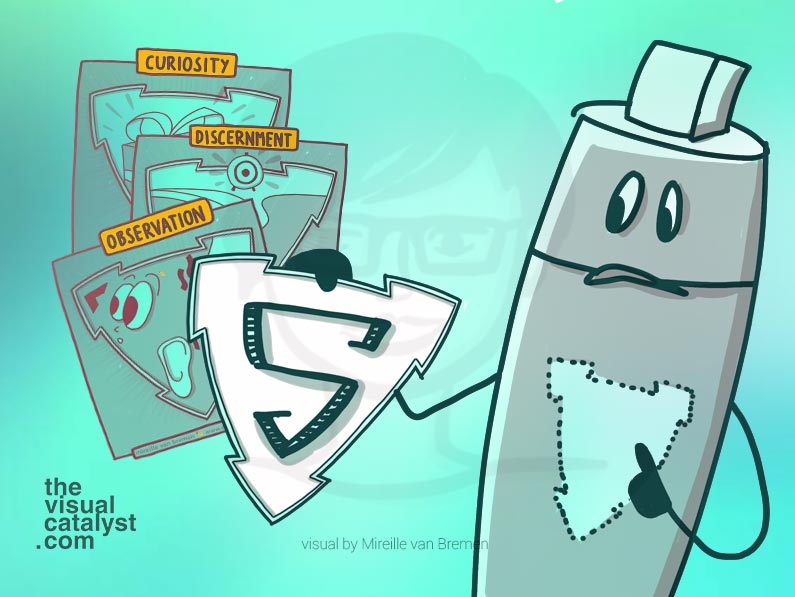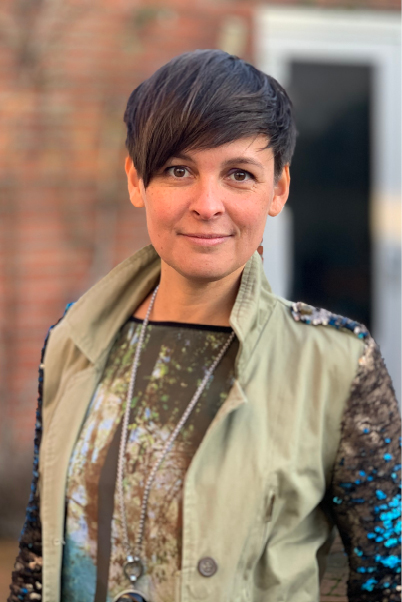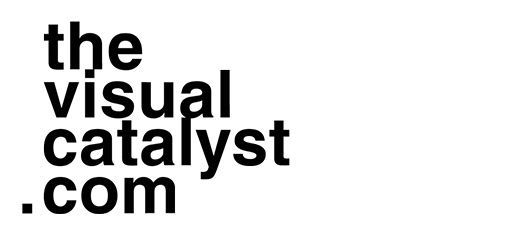
You know you have more to offer but you stand in your own way of expanding your visual skills.
You’ve got some or a lot of experience in using your visual skills in work and daily life. Your clients appreciate your effort and ability to communicate visually with them and/or for them. But oh, what do they know, you are not satisfied, although you recognize the value of your visual contribution. You know you have more to offer but you stand in your own way of expanding your visual skills.
You wish to be more visually fluent, come up faster with ideas and be more resourceful when it comes to finding visuals that serve your different audiences and can communicate different topics.
If only you would find a way to get there. The voices in your head keep you in a dialogue you can’t seem to escape from. Yet you know that you are the only one who’s got the power to choose to break the cycle.
Break it.
You are equipped with a number of abilities and qualities that, when recognized and nourished, can help you relate differently to the messages of those voices in your head. These abilities and qualities are a pathway for your visual power to flow freely again. There are many more of them, but let’s see if you recognize one or more of the following issues that block your visual power:
ISSUE 1 – YOU DON’T TAKE TIME TO EXPLORE
The key: Curiosity
Taking your time to really look at the world with curiosity helps you perceive it with an open heart and accept it for what it is. Rather than what you think it is. Which, even if you decide never to draw in your life, is a practice that will lead to an increased experience of understanding and appreciating the people and animals around you. Your curiosity is also a powerful asset to connect with your audience. Instead of always drawing an object in the same way, get curious for what things look like for them. Distinctly and for example, toilets in Japanese homes have more in common with a chair in the airplane than with a squat toilet in Bosnia. Being in a constant state of curiosity helps you as a visual practitioner to really understand your audience. Your curiosity increases your ability to offer visual empathy, because you are curious about what their (visual) world looks like.
ISSUE 2 – YOU GIVE YOUR POWER AWAY TO YOUR INNER CRITICS
The key: Discernment
In their own unique ways inner critics try to protect us from repeating experiences that in the past were painful in some way. The comparer always holds you against the light of someone who has spend more hours practicing. Or the perfectionist wants you to always be better than your were or be better than others. Then the underminer who consistently attacks your self-esteem by telling you your visual skills aren’t good enough. These or any of the other inner critics, also attempt to destroy the opportunity that was actually offered. Because right there in that moment the inner critic was talking, you hold the power to choose how to respond. Will you let it stop you or do you choose to use it’s loud voice as a reminder to bring your awareness to this opportunity of making a choice that supports you in this present moment? Visual practitioners around you constantly offer you a real time showcase of something you want to master. You inner critics point out directly what it is you want to master. Get curious and listen to what you inner critic is talking about and let your colleagues show you how they do what you like to master. Ask questions. Ask for feedback. Exchange experiences. Learn, laugh and grow together.
ISSUE 3 – YOUR DROP AN IDEA BECAUE IT’S TOO COMPLICATED TO DRAW
The key: Observation skills
Strong observation skills are incredibly important when employing your visual skills. But with the mind easily directing you to focus on what you want or prefer to see. On what you think you see and on what you thought you have (always) seen, the world looks more complicated. Especially when on top of that you mix in your thoughts about your ability to draw. Observation for a visual practitioner is, just like in verbal communication, about not having assumptions, judgements, interpretations or biases about what you are observing. So become aware of the way you observe what you are looking at. Look for basic shapes and deconstruct the what you see. Assemble it back together when you draw it on paper. This approach has another advantage: simplifying the world around you by drawing with basic shapes helps you be less judgmental about your visual skills. Are you drawing for understanding or making art?
MAIN INSIGHTS Three issues that block your visual power …
INSIGHT 1 ⚡️ You don’t take time to explore.
INSIGHT 2 ⚡️ You give your power away to your inner critics.
INSIGHT 3 ⚡️ You drop an idea right away when you think something is too complicated to visualize.
What are your ways your block your visual power?
Please share a reflection in the comments.

My name is MIREILLE VAN BREMEN
I believe that with empathy, clarity and transparency in our communication, we experience and reach more understanding, connection, inclusion, participation, leadership, creativity and trust in our relationships, communities and society.
My clients hire me to design infographics & visual summaries, illustrations and visual tools.
My participants join the online and live communication programs in my Online Training Platform
My programs help to increase impact by communicating both empathically and visually.
